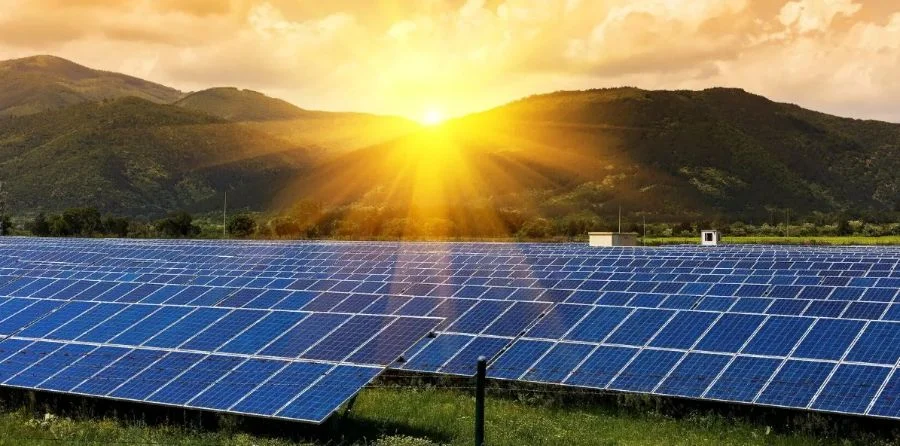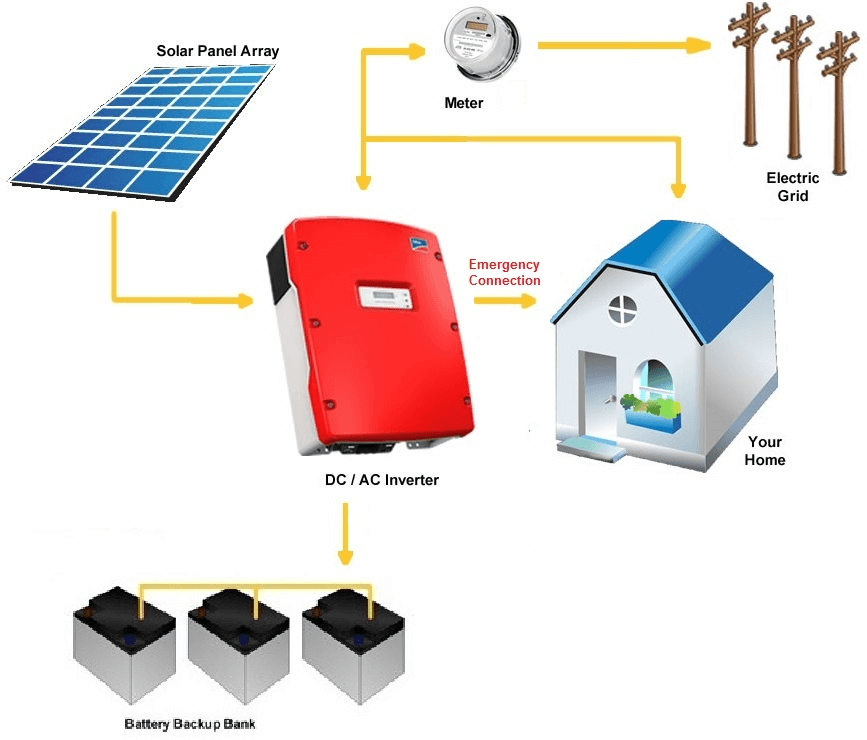Hint:
The number of solar power plants worldwide is increasing by 20% per year. And their productivity and demand by businessmen and the public is growing even faster. To understand why a solar plant is becoming a serious competitor to fossil fuels, one must start with what a complex it is, how it works and how profitable its application is.
- What is a solar plant?
- How does a solar plant work?
- How much does it cost to install a solar plant?
- How much does a 5kW solar power plant cost?
- How much does a 10kW solar power plant cost?
- How much energy does a solar power plant produce?
WHAT IS A SOLAR PLANT OR A SOLAR STATION?
A solar station is a specialized set of equipment capable of absorbing electromagnetic radiation from the sun and converting it into thermal or electrical energy.
Since ancient times, various technologies have been used for obtaining energy, which have been improved over the years.
The earliest known method of obtaining energy was through temperature drops in a hermetic transparent tower. This method was used in French farms as early as the 19th century.
The next popular technological solution was a system of mirrors placed in concentric circles around a tall central tower, with a cooling liquid tank on top of the tower. Focused rays from each mirror heated the tank to temperatures between 500 and 700°C. The coolant was converted to superheated steam, fed to the turbine and started it. Unfortunately, these types of installations required huge areas, and small home solar power plants were impossible to install in this way.
Modern photovoltaic solar stations are much more advanced and promising. The theoretical efficiency of such installations can reach 80%, and their space can vary from a solar panel occupying the size of a book to “solar farms” occupying hundreds of square meters.

HOW DOES THE SOLAR PLANT WORK?
- Solar panels
- Inverter
- Two-way electricity calculator
- Accessories Solar panels
Solar panels
Each of them is a collection of semiconductor cells stacked on a solid base. The upper part of the panel is covered with particularly strong transparent glass, and the electric current is transmitted by conductive layers.
In most cases, the ends of the panel are protected by an aluminum frame, but there are also panels that are made without a protective frame, giving the panel an aesthetic appearance as well. In large solar plants, the panels can be divided into groups that are connected in one of three ways:
- consecutive
- parallel
- mixed
Thanks to this solution, it is possible to get any output voltage.
2. Polycrystalline Silicon Poli. Used in places with little sun. The efficiency is a little lower than that of single crystals (16-20%), but this is compensated by the average annual increase in productivity due to the insignificant decrease of OGG due to unfavorable conditions.

Inverters
The second most important element of any solar plant is the inverter. Its presence in the station is necessary because the panels produce direct current, while the electrical grids use alternating current. This is exactly the discrepancy that is corrected with the help of an inverter.

Depending on what system the solar plant will work with, on grid, off-grid, or hybrid the appropriate type of converter must be used.
When choosing an inverter, the following important characteristics are taken into account:
- Device volume
- Input voltage
- Consumption without overloading
- Maximum and nominal power
Rechargeable batteries
Any solar power plant for your home, cottage or business that is designed for 24/7 operation includes rechargeable batteries. In sunny weather, excess energy accumulates in them. In the absence of batteries, excess energy is sent to the electrical grid, in the event of a shortage, with the expectation of taking it back from the grid.
Accessories
In order to combine the main elements of the solar plant into a single unit, auxiliary accessories are also needed, including:
- AC/DC fuses
- Attachments
- AC/DC cables
HOW DOES THE SOLAR STATION WORK?
The operation of the solar station is based on the principle of the photoelectric effect:
- The flow of photons falls on the surface of the solar panels.
- Sunlight penetrates into the silicon layer.
- The so-called p/n conduction occurs in the working layer of the cells, as a result of which photons push free electrons out of semiconductor atoms.
- Their flow is a direct electric current that is directed to the inverter;
From there, 220 V alternating current is sent to consumer devices and batteries, which are used for various purposes.
On grid solar system.
On grid system is a modern solution for the storage and consumption of electrical energy, which is directly connected to the main grid. Unlike an off-grid station, which is independent, on-grid stations connect to the existing grid to supply electricity to homes and businesses and industries. The converter is connected in parallel to the electrical network and feeds the consumer’s connected equipment, and transfers the surplus to the network. The grid thus serves as a “virtual” electricity reserve. To date, these systems are the most popular in the world and do not require any maintenance. The main and perhaps the only disadvantage of on-grid systems is that these systems cannot serve as a source of electricity supply if the grid is down.

Off grid solar system
These systems have certain advantages over on-grid systems. First, they can work in the absence of an electrical network or be a source of electricity storage in case of an accident, and, secondly, they can provide the consumer with his energy independence. It is also important that by using the off-grid system, the consumer begins to understand the true value of electricity and gets closer to nature and the “sun”. The main disadvantage of such systems is their relatively high cost, the need for periodic replacement of batteries and their maintenance, and the most important disadvantage is the inability to use these systems in winter in northern latitudes. Several cloudy days in a row will cause the batteries to completely discharge.
Hybrid solar system
Hybrid systems are more advanced and incorporate the best aspects of On-Grid and Off-Grid systems. The hybrid system is connected to the grid, whose converter acts as an (on-grid) grid converter and the generated electricity is stored in batteries and supplied to the grid. The stored electricity is intended to be used in case of future outages or accidents. This multi-functional system is beneficial in various environments – residential, industrial, agricultural and commercial.
What will be the benefit and what are the costs of the solar plant?
Solar energy offers many benefits: zero electricity bill, potential income from excess energy production, reduced dependence on traditional energy sources, positive environmental impact and increased corporate social responsibility. Most companies with a suitable roof or land can use solar energy. However, factors such as location, available sunlight, energy consumption and budget play a role in determining the feasibility of installing a station. Solaron’s team can assess the site to determine compliance.
| Monthly Payment for electricity | Power of the plant | Plant’s monthly generated energy | Monthly Credit Payment |
| 10000-15000 AMD | 3 kw | 18000 AMD | 14000 AMD |
| 25000-30000 AMD | 5 kw | 32000 AMD | 23000 AMD |
| 45000-60000 AMD | 10.5 kw | 62000 AMD | 38000 AMD |
As you can see, by installing a solar station, you only benefit, because you pay less money than you were paying for electricity before, and in return you get more electricity.
